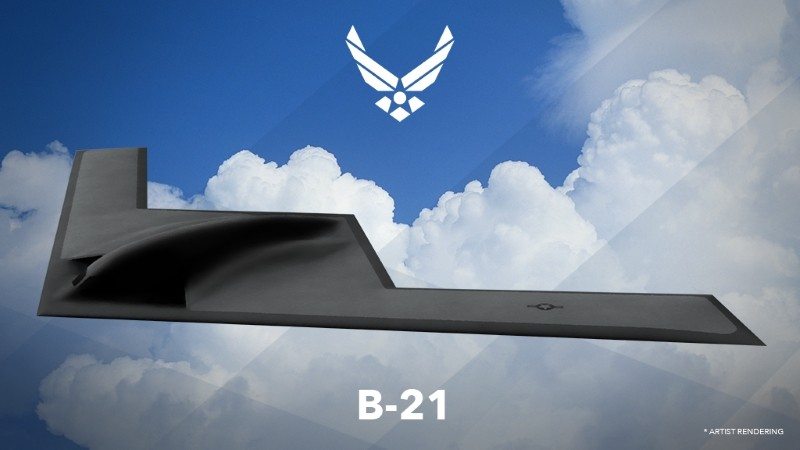US Air Force Reveal New B-21 Bomber
Alexander Neil / 9 years ago

Much of America’s air power has been in service for many years, most notably the venerable B-52. Now, they plan to bring a new craft to the fleet. Christened the B-21, and the result of Northrop Grumman’s work on the US Air Force’s Long Range Strike Bomber (LRS-B) project, looks very reminiscent of a previous US bomber, the B-2, which was the last bomber bought from Northrop Grumman in the 80s and 90s.
Revealed as part of a presentation by Air Force Secretary Deborah Lee James at the Air Force Association’s Air Warfare Symposium in Orlando, the initial concept design of the aircraft as well as it’s B-21 designation were announced. The official name of the bomber is yet to be decided, with the Air Force currently taking suggestions from service members as to what it should be, but the B-21 designation was in recognition of its position as the first bomber of the 21st century.
“This aircraft represents the future for our Airmen,” James said. “The Airman who submits the selected name will help me announce it at the conference this fall (the Air & Space Conference in September).”
While the B-21 may make many think of the old B-2 spirit, the B-21 represents many different decisions in its design. The B-2 was considered a “moonshot” project at the time, which resulted in a high cost and low production, meanwhile the B-21 looks similar to the B-2 because it is built on existing and mature designs and technology. Despite this, the initial development budget for the project is $21 billion, including designs and prototypes, with 100 aircraft planned as part of the production, each costing as much as $550 million.
The B-21 is expected to enter operation sometime in the 2020s, to be part of the US Air Force fleet going into the future. The budget proposals that account for the B-21’s production even plan for a lowered purchase of the flagging F-35 fighters over the next decade, to allow for the purchase of additional bombers. Exactly what the B-21 will bring to aerial warfare in the near future remains to be seen, but hopefully, it should deliver far more than the B-2 did in its time.



















